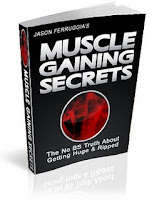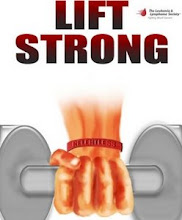www.TurbulenceTraining.com
So many questions on TT, so little time. Here's a Q'n'A session all about the benefits of Turbulence Training.
Q: Craig, could you explain to me why long slow cardio doesn't really work for fat loss and how your system of training has helped thousands of people shed fat and gain lean muscle?
CB:
First, let me clarify my opinion of "cardio" and "aerobics". I know slow cardio can work for fat loss, but those who get the most benefit are often young, heavily muscled males with time on their hands and genetics on their sides.
They can workout 6 or 8 hours per week and have lots of muscle so even if they lose a bit, it won't matter.
But for people that only have 2-3 hours total exercise per week and want a buff body, rather than a skinny, weak physique, I have found that slow, traditional cardio is not the way to go.
Slow cardio is just not efficient for overweight women (i.e. those
that use it most!), and slow cardio works less the longer you use
it. You'll hit a plateau pretty fast with a cardio-only approach.
Those are my observations.
And realize that when I talk about training for fat loss, I'm
almost always talking about getting the most results in the least
amount of training time - because that is the population I deal
with. I don't work directly with fitness models that have 8-10
hours per week to train. Things might be different there,
especially the closer you get to the competition.
But for real life, slow cardio is one of the last places I would
turn for fat loss help.
And because there are millions of men and women out there with little time to train but a real need to lose fat. Because there are so many of these people out there that have relied on slow cardio in the past, when they switch to the Turbulence Training approach, it's an almost overnight success story. Hence the high volume of great feedback we have on the program.
Q: We live in a very fast paced society. People don't have the extra time for anything these days, especially long workout sessions. Can people get real results with training programs that only take 10-30 minutes?
CB:
Certainly - as long as their nutrion is correct for 167.5 out of
168 hours per week.
That's right, nutrition is the real key to fat loss. With training,
all you need to do is apply a relatively small amount of
high-intensity exercise to your muscles and you'll sculpt them or build them, whatever your goal.
High-intensity exercise (strength training and interval training)
ramps up your metabolism more than slow, marathon cardio training sessions.
And with training, there is a diminishing return on every set. So
you can't expect 4 sets to be twice as good as 2 sets. As long as
you get in 1 hard set, you are on the way to fat burning and
bodysculpting. Then just add volume as needed and as you have the time.
Q: Can you explain "turbulence" and how it ties into real fat loss and body transformation?
CB:
What happens is this...
During high intensity training, you apply "turbulence" to your
muscles. That causes muscle/protein breakdown and glycogen
depletion (which can be called "cellular disruption").
This increased cellular metabolic activity results in "afterburn" -
that is, the burning of more calories after high-intensity exercise
than you would have burned after low-intensity exercise such as slow cardio.
So even though you might burn more calories during a slow cardio workout (say 500 calories) compared to during an equal length high-intensity Turbulence Training workout (say 350 calories), you will burn a lot more calories after the high-intensity training session.
The net result is more calories burned in the 24 hour period with high-intensity training. Combine that with the muscle-sculpting benefits of strength training, and you'll have a better body in less time. Guaranteed.
Q: I have female clients that struggle with the notion of training with resistance because they think they will get bulky...how does you TT system work with women and what kind of results have you seen?
CB:
There are a couple of simple changes you can make to avoid "bulking up".
First, let me state that generally, muscle growth is the result of
training with enough volume at the right intensity, and eating a
high-volume of calories.
Obviously, the calorie volume should be low on a fat loss program.
Next, we aren't using split routines (i.e. where you train one body part per day), so generally we are using only one exercise per muscle group. That cuts down the volume by 2/3 in most cases (as split routines often use 3 exercises or more per muscle group).
So we've eliminated the volume to avoid excess muscle growth, but kept the intensity high to reap all the benefits of Turbulence.
One other method I use in my workouts to avoid "bulking up" females is bodyweight training. There are many tough bodyweight exercise that provide low-risk Turbulence. Women love the variety in bodyweight training.
Q: Can people do your system in their homes with limited equipment and be just as successful?
CB:
Absolutely. The TT fat loss programs were designed for home gyms equipped with only a bench, an exercise ball, and dumbbells (and a pullup bar for those that are strong enough).
That's it. I designed the workouts for home gyms (as well as to be done in busy gyms) because that is how the real-life clients I deal with have to workout.
Q: Craig, I have done your workouts and they have kicked my butt, but I also left feeling better and with more energy then I had before I started. Is this a normal response you get from people that use your system?
CB:
Yes, definitely, although it can also be said of exercise in
general.
Regardless of what exercise method you use, simply moving should increase your mood and energy - essential at this time of year as the glow from the holidays recedes and the Northern hemisphere enters its winter dormancy.
Q: What are your recommendations for keeping the fat off during busy times of the year, such as the holidays or vacations?
CB:
Start your day with your workout, so that you don't get pulled into something later on that will cancel it out. Even if all you can do is a bodyweight circuit, do so safely, but with a high intensity.
There is a huge variety of bodyweight exercises you can do...these will boost your metabolism.
Beyond that, stick to your nutrition as much as possible. That
means tossing (yes, literally throwing out the junk that surrounds you) excess calorie sources away when they are not warranted. Don't keep stuff at your work desk.
Enjoy quality food at parties, but not while you go through
a regular workday.
And don't fret if you only have 20 minutes to do a workout. Now
that you know intensity and quality are more important than volume, you can be satisfied with working hard for a short period of time.
Make your workouts fun, enjoy your treats in moderation, and stay active with family activities where appropriate - don't leave a big ol' "butt imprint" on your couch or beach chair.
Do all of this, and you'll be riding a huge wave of motivation into
the new year where you can really kick butt on your fitness goals.
Sincerely,
Craig Ballantyne, CSCS, MS
Author, Turbulence Training
P.S. Wait, there's more! Listen to what these success stories haveto say about Turbulence Training. Get twice the results in half the time!
"I am a 44 year old mother of 2. I have been struggling for the
last 8 years (since my youngest child was born) to return to my
toned shape. Nothing has worked for me until giving TT a try.
After spending hours upon hours in a gym and spending way too much time running and doing other things that will eventually wear out my joints, I gave in and decided to accept that I should age gracefully. NO WAY! I decided to try TT and cannot believe the results. Thank you so much for sharing your knowledge. It can truly change your attitude and life."
Lisa DiDonato
"I purchased the TT training manual about a month ago and have been following it ever since. It makes so much sense and i really enjoy the different workouts so never get bored the body weight workouts are cardio in disguise as i find i burn just as many calories if not more from a BW session as i do with the TT cardio session. I am sore in places i have never been sore and find i push myself just to prove i can do the moves and love it. From an aussie that was looking for something other than just another weight workout with the same old moves this has been a real eye opener for me and i have been telling my friends just how great the TT method is."
Kelli Tomkins, Australia
"I am actually getting twice the results in half the time. As a
serious gym junkie with little imagination finding your workouts
has been a welcome breath of fresh air. I no longer feel bound to
the gym struggling for the smallest result. My body and I are in
this together now. Your workouts are interesting and make me feel strong in practical ways. It's more like a game of testing my
capabilities, not another boring workout. On top of that I can't
praise your customer service highly enough, you have been amazing! I never expected such quick personal responses to my emails. For the price I paid, I have received so much more than I anticipated. Many thanks and all the best."
Heidi Sinclair
"Craig, got my 6-week bodyfat test lost 10lbs of fat and gained 6lb of muscle, im proving you can lose fat and gain muscle at the same time with your TT workout system,and nutrition plan."
Desmond Hardison, NV
"Hi Craig, I am enjoying Turbulence Training. I am a personal
trainer, so I've incorporated much of it into my sessions. Though
I used some philosophies from TT, your program has added a world of new ideas, methods, and techniques to my client sessions. And for that, I thank you so very much. Even my wife loves it, ha! So much more to read and implement, so TT reading will keep me busy for many months to come. Make it a great day!"
Loren Salas
Craig Ballantyne is a Certified Strength & Conditioning Specialist and writes for Men's Health, Men's Fitness, Maximum Fitness, Muscle and Fitness Hers, and Oxygen magazines. His trademarked Turbulence Training fat loss workouts have been featured multiple times in Men’s Fitness and Maximum Fitness magazines, and have helped thousands of men and women around the world lose fat, gain muscle, and get lean in less than 45 minutes three times per week. For more information on the Turbulence Training workouts that will help you burn fat without long, slow cardio sessions or fancy equipment, visit www.TurbulenceTraining.com
www.Workouts101.com








